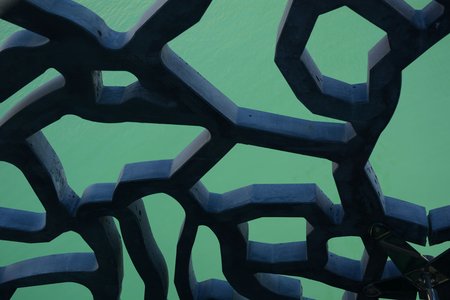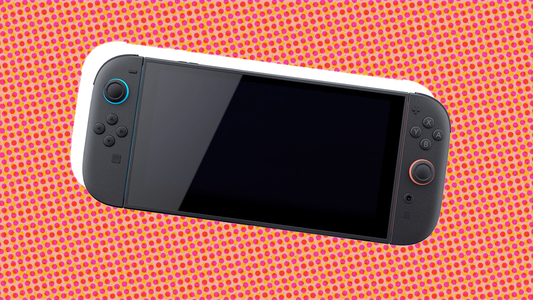Hi! My name is Nik Mueller and I’m a pixel artist with Curious Panda Games. Back in August we launched our Kickstarter campaign for our turn based tactical RPG The Iron Oath. The campaign successfully concluded in September, and we more than doubled our goal of $45k, garnering $94,524 from 3835 backers. Though part of it was just good fortune, we put in a lot of work that helped us get noticed and ultimately funded, and I’m going to try and lay our entire process out for you.

Building an audience:
One thing we see a lot is that some devs wait until their game is nearly done(or is done) before they go public. Unfortunately if you wait that long, chances are that it’s already too late and you’re going to have a tough time gaining an audience. This is something we were guilty of with our first game, and with so many indie titles being released every day, it’s not a mistake you can afford to make.
When we started work on The Iron Oath, we knew that we ultimately wanted to take it to Kickstarter, and nearly a year in advance of our campaign's launch we went public with our game to start building a following. This was no easy task, our Twitter accounts between the 2 of us had maybe 100 followers at the time, and our newly created Facebook and Tumblr pages took a while to get going. Here’s an outline for what worked for us on social media:
Post early and often: As soon as you have something for your game that you think is interesting enough to show off, do it. It’s almost never too early to start building interest. Posting daily isn’t a must but it certainly helps.
GIFs are king: Without looking it up, I would say 90% of our tweets pertaining to our game contained a gif, either of an animation I whipped up in Aseprite or of something in-game. From our experience, gifs are by far the most effective way to gain impressions and followers.
Find the best time for your posts: We found out that our posts performed best after 10PM EST for every day of the week. This may not be true for you, so pay attention and maybe keep track of your results for a month or two.
Use the appropriate hashtags and participate in #screenshotsaturday: Most devs know this by now, but it’s important to tag your tweets appropriately. In our case they were almost always accompanied by #pixelart #gamedev #indiedev #indiegame, and of course #screenshotsaturday when Saturday rolled around(which we usually planned ahead and saved our best gif for).
Go easy on the Twitter follow button: It quickly became apparent to us that there were a lot of accounts that would play the follow/unfollow game(trying to get you to follow back). We weren’t too fond of that tactic and from the start we only followed people who we were genuinely interested in, and didn’t care whether or not they followed us in return. If you go around following hundreds of accounts per day under the premise of hoping they follow you back, you’re building an inflated audience that doesn’t necessarily reflect the actual interest in your game. Of course, this is just our opinion, and since we didn’t try the other method we can’t say for sure what works best, but we do feel that we grew a more organic audience by handling it the way we did.
Post on relevant subreddits and forums: There were a few forum threads on our game that we discovered(it’s good to google your title every once in awhile!), and it gave us the chance to engage in some great discussion with those communities. We also frequently posted some of our work on subreddits such as r/pixelart and r/Unity2D. It’s also a good idea to start a devlog on TIGSource to get some extra eyes on your game and to talk with some other developers.
By the time our campaign started in August we had a combined 3500 Twitter followers, 2300 Tumblr followers and 100 Facebook likes. Our YouTube channel had also gained 1600 subscribers from the pixel art timelapses I had been uploading, and our newsletter had 300 subscribers(we have a signup widget on our website and Tumblr). Not groundbreaking numbers by any means, but we were quite happy with the progress we made throughout the year. We’ll get into how each social media platform contributed to our campaign a little bit later.
Campaign Page Preparation:
The first thing I should say is that you need to give yourself plenty of time(months if possible!) to prepare your campaign page as it’s a lot more work than you might think. We gave ourselves a few weeks and we were still tweaking the page just minutes prior to launching. Before launching you need to:
Choose your funding target carefully: We went with $45K, which was what we calculated to be the absolute minimum needed to get the game done by our estimated release(March 2019). Be sure to account for taxes, the Kickstarter fee and some inevitable failed payments(we had about $1500 worth).
Prepare your page description: Lead with the most important and exciting parts of your game. We didn’t expect most people to read much past the Introduction, Features and Gameplay categories, so we made sure to get down to the point of why our game would interest them. This is another part where you need lots of gifs(it helps if they’re tied to what you’re describing) as they help sell your game a lot better than a still image can. Don’t lead with the story or lore of your game, as most will simply not care until they’re sold on the gameplay itself.

Choose your rewards and plan some add-ons for later in the campaign: Considering that we’re a 2-man team, dealing with physical reward fulfillment for potentially thousands of backers seemed like a nightmare that we wanted to avoid. For this reason all of our rewards were entirely digital, but still enticing enough that our backers felt that a higher tier was worth it. Allowing add-ons is another good practice that lets people increase their pledge for a higher tier reward. In the last few days we had a lot of people add-on to get beta access or just grab a second copy for a friend.
Create a to-the-point trailer: Try to grab the viewer’s attention right away and skip the long introductions and logo fades; a length of 2 minutes seems to be the sweet spot. If you insist on talking in your video, save it for after your actual trailer, but honestly the gameplay footage should be able to speak for itself. The timing of the audio is also pretty important and Chris spent a lot of time making sure what you were seeing in the trailer matched with what you were hearing. For the final shot of the trailer, you want to leave the viewer with a good impression. In our case, we went a huge mysterious creature that revealed itself to the characters, followed by a quick fadeout synched to the music.
<iframe title="Embedded content" src="//www.youtube.com/embed/h4qN8EbVlXM?wmode=transparent&jqoemcache=OU3Al&enablejsapi=1&origin=https%3A%2F%2Fwww.gamedeveloper.com" height="349px" width="100%" data-testid="iframe" loading="lazy" scrolling="auto" class="optanon-category-C0004 ot-vscat-C0004 " data-gtm-yt-inspected-91172384_163="true" id="959873781" data-gtm-yt-inspected-91172384_165="true" data-gtm-yt-inspected-113="true"></iframe>
Think about your stretch goals: We would recommend holding off on revealing your stretch goals until you’re a little closer to being funded. We had a pretty big wish list to draw from, and by doing this we had the chance to adjust our goals based on what the community wanted(though in our case we pretty much stuck to the initial plan). It’s important to not get carried away and remain realistic here. We ended up going with some stretch goals that expanded on the core functionality of our game such as ‘Sea Travel and Encounters’. While a console stretch goal would be nice, it wasn’t something we could realistically do on our own.
Consider doing social goals: This is a relatively new thing that campaigns have started doing, giving small rewards for various milestones achieved on social media(such has 100 retweets). It’s a fairly simple thing to do that gives your backers an incentive to get involved in spreading the word.
Pick the date and time you launch: We launched on a Wednesday at 11am EST. We found that many recently successful campaigns had started on a Tuesday or Wednesday, and so we followed suit. It’s also good to consider your end date, which is something we simply overlooked. Our campaign ended early on a Friday, so we didn’t get to reap the benefit of the coming weekend(for obvious reasons, weekends are where you’ll gain the most backers). If we had to do it over again, I would definitely choose to start on a Friday, and end on a Sunday.
I would recommend checking out some successful Kickstarter campaigns to get some ideas on how to format your page, especially those of a similar genre as you’ll likely share an audience. A few campaigns that we looked at were Pixel Princess Blitz, Fort Triumph, Blasphemous and Darkest Dungeon.
Launching Your Campaign:
The first 48 hours of your campaign are the most important and you need to do everything you can to get off to a good start. Hopefully the following you’ve built to this point will be enough to do so, but there’s some extra things you can do too:
Use Thundercl

































